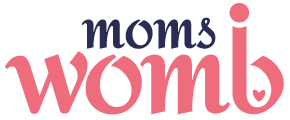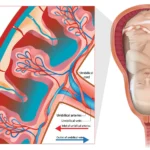What is a breastfeeding diet? There is no such thing as a breastfeeding diet for women. Your body produces breastmilk for your baby, no matter what you eat. The quantity doesn’t matter either. Your body continues to produce the necessary amount of milk for the baby. You should listen to your body and eat as much food as possible.
Breastfeeding women notice that their increased appetite, acquired during pregnancy, continues during nursing. Your body makes the most vital foods for your baby. Most women vary their baby fat after delivery and are cautious about eating more. However, it is not recommended to go on any diets or avoid foods to lose baby fat. It is not healthy for you and your baby at this point.
You just need to focus on eating healthy, nutritious meals, as you did earlier when pregnant. Your body needs time to heal and may slowly return to its previous shape. Let your baby have the best nourishment offered by nature through you. The more you nurse, the more your body produces breastmilk.

Foods to include
- Protein-rich foods help in building body mass. Include eggs, chicken, meat, fish, beans, whole grains, cereals, milk, and milk products.
- Include plenty of colored vegetables in your main servings every day. Add your favorite leafy greens to your meals. Nuts and a variety of seeds are also good for you.
- Fruits are full of vitamins and minerals. You can have them fresh and whole regularly. Having green or fruit juices doesn’t help in increasing the milk supply. Neither does drinking lots of milk, as believed by many. Everything you eat will become food for your baby anyhow.
- You may get dehydrated quickly when you are nursing, so keep drinking as much water as possible.
- If you are vegan, you should take special care to include protein-rich foods such as beans, soy products, legumes, pulses, lentils, and dry fruits. Vitamin B12 is available in meat, and fish is essential for a baby’s growth. You may need to go for supplements if you are a vegetarian.
- You may be advised to continue with your iron and calcium supplements as long as you breastfeed. This is beneficial for both you and your baby.
Foods to avoid
- You must limit your caffeine intake if you consume more than three cups daily. This is passed on to milk and can make the baby irritable. You must cut down on tea and coffee if your baby has trouble sleeping.
- Avoid alcohol when breastfeeding. It takes about two or three hours to pass into the milk. Any amount of alcohol in milk is harmful to the baby. You will need to pump and dump if you consume alcohol, or you may pump beforehand for the baby.
- It is better to avoid spicy and heavy foods when breastfeeding. These can cause gas and acidity. Babies suffering from colic can become more uncomfortable if they consume spicy stuff.
- Some babies may develop allergies to certain foods they consume, such as dairy or nuts. They may pass greenish stools with mucous. Try to avoid foods that may have caused this issue and consult a pediatrician if you have concerns.






